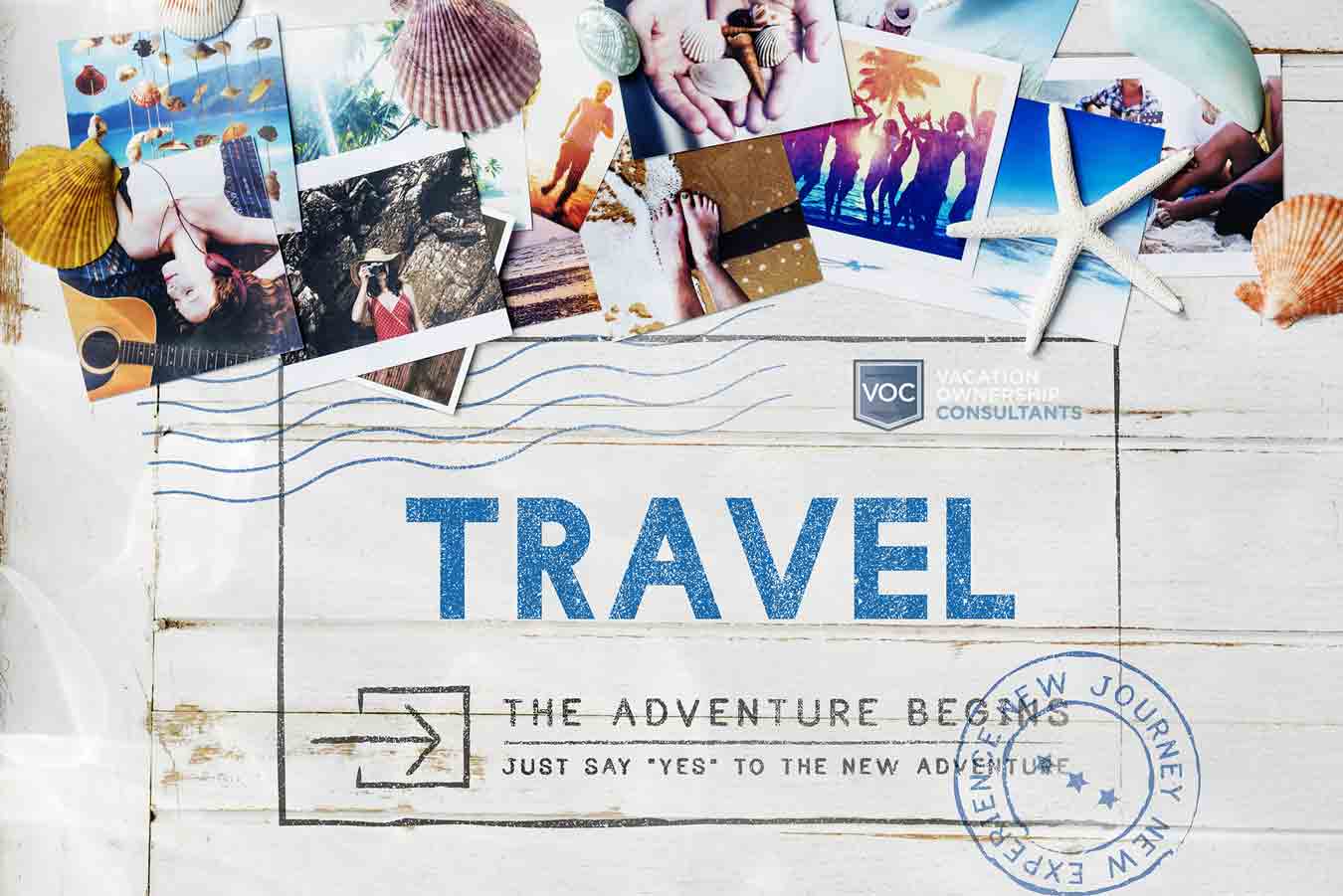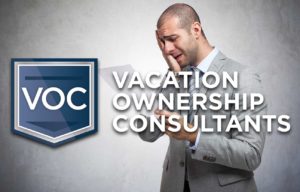While you might be reading this to help you determine if a timeshare is worth it, some of you may want to know why your timeshare experience isn’t what it used to be. The industry has come a long way since its conception over 55 years ago and it’s very advantageous of you to pursue a better understanding of the perpetual purchase. Knowing what to expect from timeshare companies and how to make the most of your purchase is important. The evolution of timeshare ownership after 1980 played a big role in what owners face today.
The Reality of the Timeshare Industry
Although traveling options have evolved tremendously since the 1960’s, the purpose of timeshare ownership hasn’t really changed. What’s actually become more clear over time is the intent behind travel corporations and the resorts themselves. Instead of vying for consumer attention with convenience, timeshare companies have slowly shifted their focus towards the mass amounts of revenue within the travel industry. When you think about it, you can’t really blame them. You’d think most people wouldn’t make an impulse buy of this magnitude, but they do. It’s been rather simple for many of these companies to persuade their way into million-dollar market shares without much consideration for those driving the revenue.
Whether timeshare owners view the purchase as fruitful or not, they’re still under contract with an obligation to pay. Perpetual agreements have been extremely beneficial to resorts and have fueled the success of the multi-billion dollar industry today. In reality, any business with guaranteed monthly revenue would thrive. In our last article, we touched on the infant stages of timesharing and the massive expansion efforts that followed. So, let’s travel back to the 1980’s and see what happened once the rush of the industry was in full swing.
How Timeshare Ownership Evolved in the 1980’s.
As the industry exploded in the 1970’s, many timeshare owners started to realize availability wasn’t what they thought it would be. Because of this, they slowly began demanding a little more flexibility from resorts. This trend continued into the 1980’s when even more unfavorable solutions continued to put a bandaid on the problem. Although “The Two Bobs” pioneered a points system to reward their owners early on, not all timeshare companies followed suit into the 80’s. The revenue-focus of the 70’s eventually clouded the judgement of resorts. Taking care of their primary source of income wasn’t a priority like it was for the industry’s pioneers.

During this decade, resorts also began to experience a growth in general travel inquiries. This was due to the exposure they received from timeshare travel. In comparison to fractional ownership, retail opportunities during peak seasons provided a much higher return for resorts. They realized they could hike up prices during peak seasons and divvy out the remaining weeks to their owners. Sales organizations (which is what most timeshares companies evolved into), are always going to focus on what drives the most revenue. Because of this, timeshare owners typically received the short end of the stick. But it didn’t mean timeshare companies stopped trying to appease fractional owners. The problem was, their efforts weren’t sustainable.
Fixed Systems Evolve into Limited Floating Systems
In order to find a balance, timeshare companies began promising owners a certain number of weeks throughout the year to choose from. A well-known example is the float system. This was created to give users options outside of the traditional fixed system. They could either use their purchased unit (villa) during their scheduled week or they could use a floating week during certain times of the year on a similar unit (number or rooms, size or location). A typical unit in the 80’s consisted of two bedrooms and two full baths with a maximum sleeping capacity for six to eight people.
While this was a step above what owners received before, the ineffectiveness of the resolution actually created more problems. Today, many timeshare owners still face availability concerns and incomparable lodging. We can’t imagine what it was like in the 1980’s. Because of limitations, many developers began expanding into urban markets to provide users with a variety of options. But like the previous decade, far too many were offering packages and plans that didn’t even exist yet – throwing yet another wrench into the timeshare owner experience.
The Beginning of Timeshare Sales Regulations
By the early 1980s, the tactics of development companies began to get out of hand. While this affected the global trade, the United States was one of the first countries to take a stand. Since many timeshare destinations were located in Florida, the state became concerned with unethical selling practices that were affecting their tourists. In turn, they passed a law in 1983 that imposed strict restrictions that only complying developers could meet.
While the main objective was to eliminate unethical practices in Florida, this moment in time could have single handedly saved the industry from collapsing altogether. Another important accomplishment of the 1980’s was the formulation of the ARDA. What started out as a small regulatory organization slowly turned into a conglomerate that regulated timeshare sales while attempting to maintain a certain level of ethics within the industry. Coupled with the entrance of major lodging companies, like Marriott in 1984, government regulations strongly influenced consumers in the 80’s. Although the negative perception wasn’t totally removed, these occurrences added extensive credibility to timeshare travel.

How Timeshare Ownership Evolved in the 1990’s
Although timesharing stumbled into 1990, expansion continued. The main reason was because the industry proved it could dominate holiday travel. At the same time, regulations still weren’t able to slow down misleading sales tactics and the number of complaints by users. Rapid expansion made it difficult for the government to keep up and once again things got out of control. While some may say timeshare travel was far worse in the 90’s vs the 80’s, it’s hard to say. Timeshare ownership had grown to 4 million global users and over 2,300 shared resorts in the 90’s. The increase in consumer dissatisfaction might have simply been caused by the drastic increase in owners. Either way, something needed to be done to get things under control.
What’s interesting about the 80’s and 90’s is the industry’s strategy to overcome its flaws. Instead of addressing the problems fractional owners had, timeshare companies continued to distract their users with anticipative efforts. Not much has changed today. In order to paint the picture of a brighter future, major hotel brands continued to step onto the scene. While Marriott got their foot in the door first, Ramada, Four Seasons, Sheraton, Hilton, Radisson, Disney, Ritz-Carlton and Westin all pursued the potential of timesharing in the 90’s. As sales continued to skyrocket, the experience remained less-than-stellar.
Rapid Expansion Left the Government Reeling.
By 1990, the Office of Fair Trading launched its first investigation and report for the timeshare industry. To give you some perspective on how bad sales had gotten, it took the government almost a decade to organize and respond to the overwhelming number of unethical sales and false advertising complaints. While many people felt as though the government failed them, forecasting this type of epidemic was nearly impossible. Nonetheless, the basis of these investigations and reports helped formulate the Timeshare Act of 1992.
No matter how many laws passed in the 90’s, nothing slowed down the aggressive tactics of sales organizations until Europe banned upfront payments in 1998. Despite progress for consumer rights, nothing actually decreased the number of complaints timeshare owners filed. In the end, misleading tactics continued to prevail because regulations were ignored or manipulated by companies fueled by greed. Those with disdain for laws and regulations simply continued to prey on vulnerable fractional owners.

The Evolved Timeshare Industry of the 2000’s.
Towards the end of the 90’s, industry concerns became further complicated when rental properties came into fruition. Online communication and email also made it even more difficult for regulations to keep up. At this point, anyone could take a stab at the travel market. Aside from unethical sales practices online (that had also never been seen before), timeshare owners were now being marketed improved opportunities for lower prices. If they were disgruntled before, this only added bitterness to their experience. This is when predatory agencies began preying on desperate, gullible fractional owners. The deceit of the industry enhanced sales but only added to the negative stigma of timeshare ownership.
After nearly 4 decades in motion, the timeshare industry was still experiencing the same problems that troubled it’s users from the get go. At this point, some consumers had been dealing with dissatisfaction for a long time. Others grew tired of their purchase and were ready to find a way to move on from their agreement. Since major hospitality organizations controlled the marketplace, there wasn’t much users could do to escape their unwanted timeshare contract. This changed (kind of) when resale opportunities emerged.
Resale Opportunities Provided Hope For Timeshare Owners
Timeshare companies initially discouraged resales for obvious reasons, but were forced to compete when secondary markets began offering relief. These independent resellers whom consisted of smaller, local real estate brokers, used traditional real estate techniques to resell timeshare contracts. The problem was, most buyers didn’t purchase their timeshare through real estate channels, rather resort marketing programs.
Because of this, these tactics rarely worked. Either way, resorts wanted to make sure their users weren’t being enticed by possibilities to get out of their contract. Again, sales organizations aren’t focused on refunds and eliminating residual income. They viewed resales as another opportunity to sell fractional owners on something else and the manipulation continued. There are plenty of resale, transfer and exchange tactics from the early 2000’s that are still used today.

Could the Timeshare Industry be History Soon?
No matter what tactic resorts rolled out, they were never really able to slow down the rising number of frustrated timeshare owners. Instead of focusing on the consumer experience when they had the chance, they slowly started to lose their grip on the travel industry. By the mid 2000’s, timeshare companies became so concerned with trying to get their users to forget about the past that the future of the timeshare industry started looking slim.
Once the vacation rental revolution finally started gaining traction, timeshares couldn’t compete with their ability to deliver on a positive experience. As the media grew it’s reach and social media took over the internet, the deceit and unethical practices of the timeshare industry became a bigger topic of conversation.
Timeshare cancellation services also began helping fractional owners legally get rid of their contracts for good. Despite continued scams, the legitimacy of these services are now at an all-time high. As awareness continues to grow, a majority of consumers are making informed decisions on timeshare ownership. Today, nearly ⅔ of timeshare owners unwillingly pay their annual maintenance and assessment fees. One could say the perception is at an all-time low. If the trend continues then we could see a drastic change in the timeshare landscape by 2025.

Aside from a number of improved travel options emerging, consumers are now able to research and purchase travel packages that best suit them. While the timeshare timeline has lasted almost 6 decades, it looks like it’s time for the industry to start sharing the wealth with platforms that value the user experience. They don’t really have a choice. But it’s safe to assume they’ll continue targeting uninformed consumers until the market completely dries up. The history of timeshare evolution doesn’t really show us otherwise.






